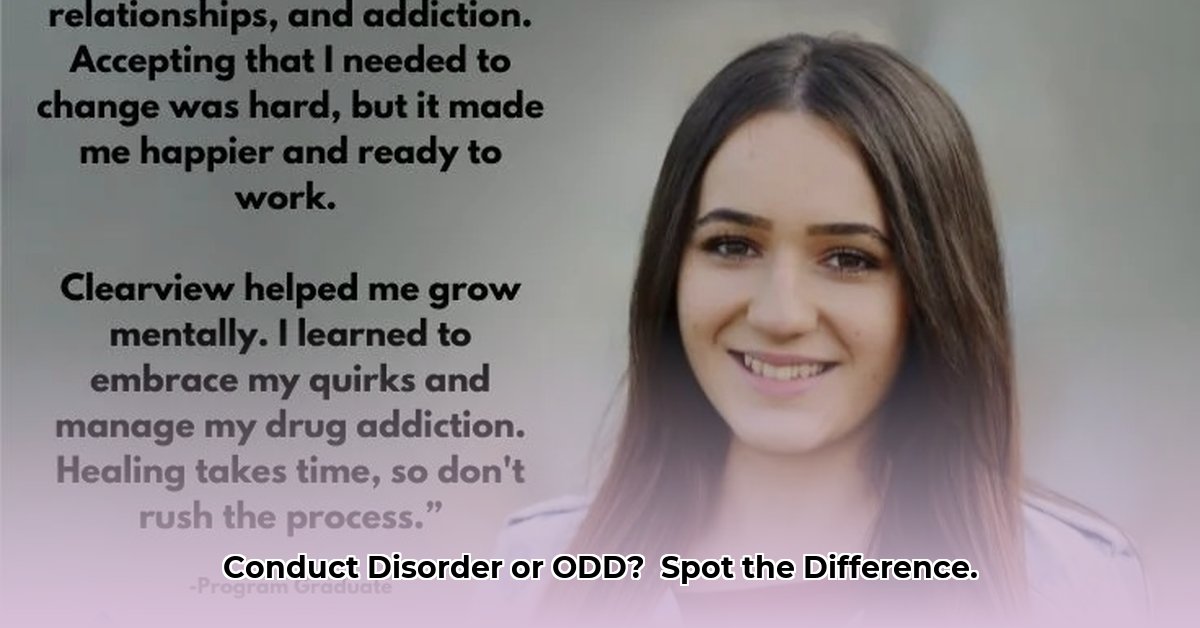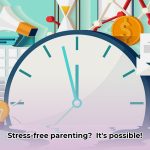Is your child constantly arguing, breaking rules, or displaying aggression? Understanding the difference between Oppositional Defiant Disorder (ODD) and Conduct Disorder (CD) is crucial for providing appropriate support. This guide offers a clear comparison, explains diagnosis and treatment options, and provides practical advice for parents and educators.
Understanding ODD
ODD is characterized by a persistent pattern of angry or irritable mood, argumentative or defiant behavior, and vindictiveness. These behaviors must last at least six months and be more frequent and intense than typically seen in children of the same age.
Symptoms of ODD
Children with ODD may:
- Frequently argue with authority figures.
- Refuse to comply with rules or requests.
- Deliberately annoy others.
- Blame others for their mistakes.
- Be easily annoyed or angered.
- Be spiteful or vindictive.
ODD Onset and Severity
ODD typically emerges before age 12, rarely in adolescence. Severity is classified as mild, moderate, or severe based on the number of settings (home, school, social) where symptoms occur.
Understanding CD
CD involves a more serious pattern of behavior where the basic rights of others or major age-appropriate societal norms are violated.
Symptoms of CD
Children with CD may:
- Bully, threaten, or intimidate others.
- Initiate physical fights.
- Use weapons that can cause serious physical harm.
- Be physically cruel to people or animals.
- Steal while confronting a victim (e.g., mugging, purse snatching, extortion, armed robbery).
- Force someone into sexual activity.
- Deliberately destroy others’ property (e.g., fire setting).
- Lie to obtain goods or favors or to avoid obligations (i.e., “cons” others).
- Steal items of nontrivial value without confronting a victim (e.g., shoplifting, but without breaking and entering; forgery).
- Stay out at night despite parental prohibitions, beginning before age 13 years.
- Run away from home overnight at least twice while living in parental or parental surrogate home, or once without returning for a lengthy period.
- Be truant from school, beginning before age 13 years.
CD Onset and Severity
CD can begin in childhood (before age 10) or adolescence (after age 10). Childhood-onset is often linked to more severe and persistent problems. Severity is classified as mild, moderate, or severe based on the degree of harm caused.
ODD vs. CD: A Side-by-Side Comparison
| Feature | ODD | CD |
|---|---|---|
| Symptoms | Defiance, arguing, anger, vindictiveness | Aggression, destruction of property, deceitfulness, serious rule violations |
| Age of Onset | Usually before age 12 | Childhood (before 10) or adolescence (after 10) |
| Severity | Mild, Moderate, Severe | Mild, Moderate, Severe |
| Long-Term Outcomes | May increase risk of anxiety and depression if left untreated | Increased risk of antisocial personality disorder, substance abuse |
Diagnosis and Treatment
Diagnosis
Both ODD and CD are diagnosed by mental health professionals through a comprehensive evaluation. This involves:
- Gathering information: Interviews with the child, parents, and teachers.
- Behavioral observations: Assessing the child’s behavior in different settings.
- Questionnaires and rating scales: Standardized tools to measure symptom severity.
- Differential diagnosis: Ruling out other conditions with similar symptoms.
Treatment for ODD
-
Parent Management Training (PMT): Teaches parents strategies to manage behavior, set limits, and reinforce positive choices.
- Identify Target Behaviors: Pinpoint the specific behaviors you want to change.
- Set Clear Expectations: Establish clear and consistent rules.
- Positive Reinforcement: Reward desired behaviors with praise, attention, or small privileges.
- Consistent Consequences: Implement appropriate consequences for misbehavior.
- Track Progress: Monitor the child’s behavior to evaluate the effectiveness of strategies.
-
Cognitive Behavioral Therapy (CBT): Helps children identify and modify negative thought patterns and develop coping skills.
Treatment for CD
- Multisystemic Therapy (MST): A family- and community-based program for serious behavioral problems.
- Individual Therapy: Focuses on anger management, communication skills, and moral reasoning.
- Parent Management Training (PMT): Similar to ODD treatment, but often addresses more severe behaviors.
- Medication: May be used in some cases to manage co-occurring conditions like ADHD or anxiety.
Living with ODD/CD: Support and Resources
- Support groups: Connect with other families facing similar challenges. (The Federation of Families for Children’s Mental Health)
- Therapy: Family therapy can improve communication and reduce conflict.
- School interventions: Work with school staff to create a supportive learning environment.
- Respite care: Provides temporary relief for caregivers.
Related Conditions
ODD and CD may occur alongside other conditions such as:
- ADHD (Attention-Deficit/Hyperactivity Disorder): Children and Adults with Attention-Deficit/Hyperactivity Disorder (CHADD)
- Anxiety disorders: Anxiety & Depression Association of America (ADAA)
- Depression: National Institute of Mental Health (NIMH)
Conclusion
While ODD and CD present unique challenges, early intervention and appropriate treatment can significantly improve outcomes. If you have concerns about your child’s behavior, consult a qualified mental health professional.
Disclaimer: This information is for educational purposes only and does not constitute medical advice. Consult with a qualified healthcare professional for diagnosis and treatment.
- Wellness Fair Ideas for Work to Boost Employee Wellbeing - December 15, 2025
- Affordable Employee Wellness Fair Ideas for Any Budget - December 14, 2025
- Employee Wellness Programs Strategically Benefit Employee Health And Retention - December 13, 2025
















